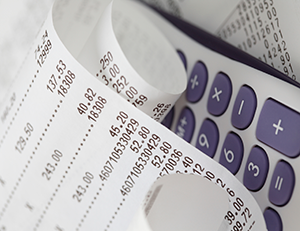Superannuation FAQ’s
Superannuation is a compulsory scheme where a person has money paid by their employer to a super fund so they are financially supported when they retire from the workforce.
What is superannuation?
Superannuation, more commonly known as ‘super’, is a way of saving money for your employee while they work, so they have money when they retire. As an employer, you’re obligated to put a percentage of your employee’s salary away each salary payment into a superannuation fund of their choosing. This ensures they have money when they leave the workforce.
A superannuation fund is an institution that is legally allowed to hold and invest your super.
How do you calculate superannuation?
Superannuation is calculated at the rate of 9.5% of your gross salary and wages. So, if you had an employee with a salary of $50,000, their superannuation would be 9.5% of that, or $4,750 on top of their pay.
The ‘superannuation guarantee’, as it is known, has been 9.5% since the 2014-15 financial year. It is scheduled to rise 0.5 % each financial year and be up to 12% by 2025-26.
Types of super funds?
There are more than 200 different superannuation funds in Australia and if your staff are entitled to choose their own super fund, then you must provide them with a Standard Choice form within 28 days of them starting their employment. The types of super funds include:
- Retail funds are usually run by banks or investment companies
- Industry funds were originally designed for workers from a particular industry but, are now open to anyone.
- Public sector funds were originally designed for people working for federal or state government departments. Most are still reserved for government employees.
- Corporate funds are arranged by employers for their employees
- Self-managed super funds are private superannuation funds that allow people to directly invest their money.
How is super regulated?
The Australian Prudential Authority (APRA) regulates ordinary superannuation accounts. Self-managed superannuation funds are regulated by the Australian Taxation Office (ATO).
When is superannuation payable?
Employers must pay superannuation into their employee’s funds at least four times per year. The due dates are 28 January, 28 April, 28 July and 28 October. Alternatively, you can pay monthly or with each pay.
How do I pay employees super?
Employers must use SuperStream to pay super electronically. SuperStream transmits money and information across the super system between employers, funds and service providers and the ATO in a single transaction. Payroll software such as Cashflow Manager Gold, Wages Manager and Wages 1-4 are SuperStream compliant, making paying and reporting super easy.
Learn how to set up SuperStream in your Cashflow Manager subscription.
What are my superannuation obligations as an employer?
Employers are required to pay superannuation to all their staff if the staff are:
- Over 18 and earn more than $450 before tax in a calendar month
- Under 18, work more than 30hrs per week and earn more than $450 before tax in a calendar month
This applies if the staff are casual employees, part-time employees, contractors (provided the contract is mainly for their labour) or temporary residents.
What is salary sacrifice?
Salary sacrifice is when your employee wants to add to their super from their pre-tax salary. This can be a smart and tax-effective way to boost super savings. A personal contribution is an additional super payment from after-tax salary.
What is super not calculated on?
Super is usually excluded from:
- Overtime hours
- Some allowances
- Reimbursed expenses
- Benefits subject to fringe benefits tax
- Jury top-up payment
- Parental leave payments
- Annual leave loading
- Accrued annual leave, long service leave, sick leave paid as a termination lump sum
- Redundancy payments
- Gratitudes and dividends
At what age can super be accessed?
Other than in a few exceptional circumstances, super cannot be accessed until you reach retirement age (60 if you were born after July 1964) and have stopped working. At 65, you can access your super whether you’re working or not.
How can I see how much super I have?
You can check your super by registering for the Australian Taxation Office’s online services via myGov. This will allow you to see details of all super accounting including any lost accounts.











Leave a Reply